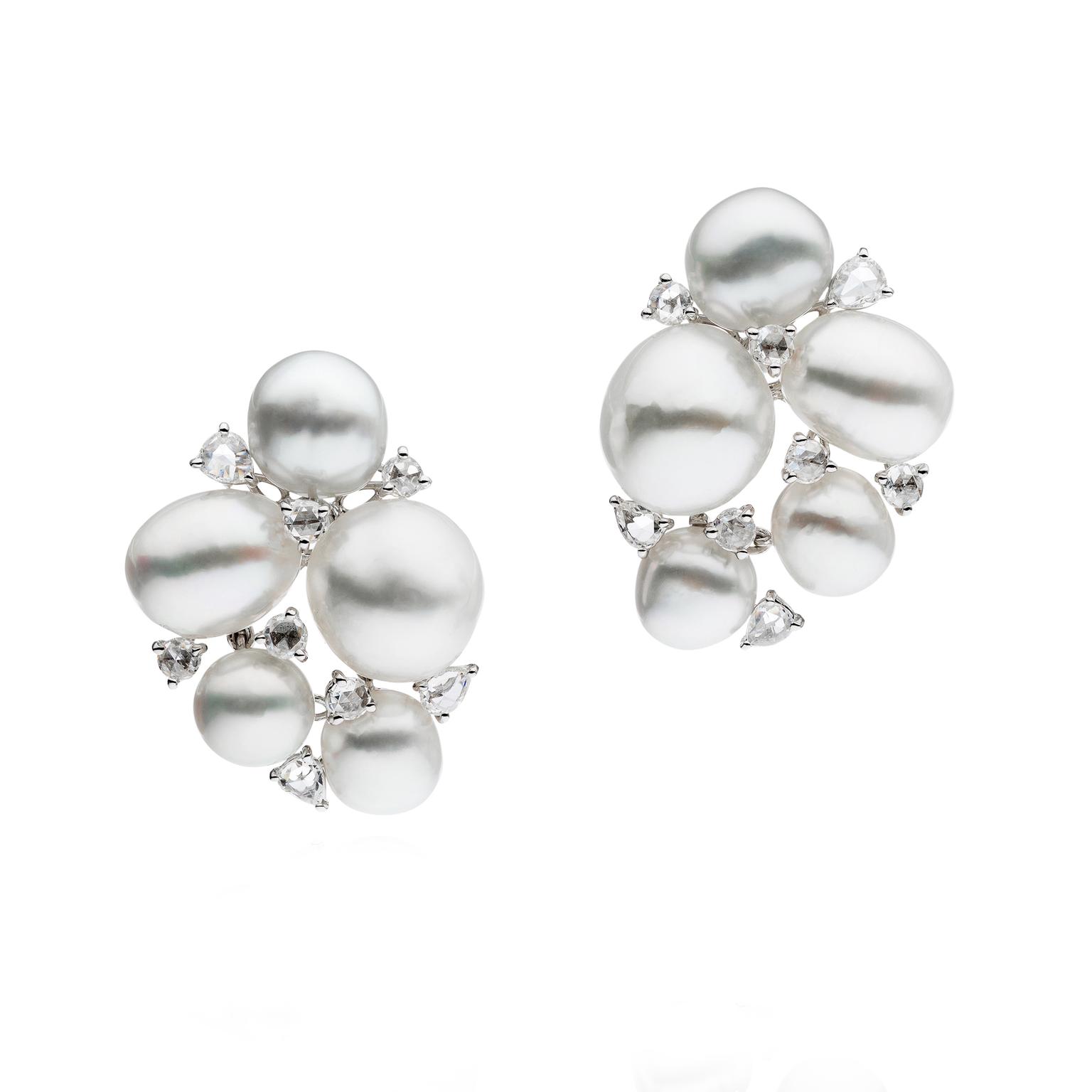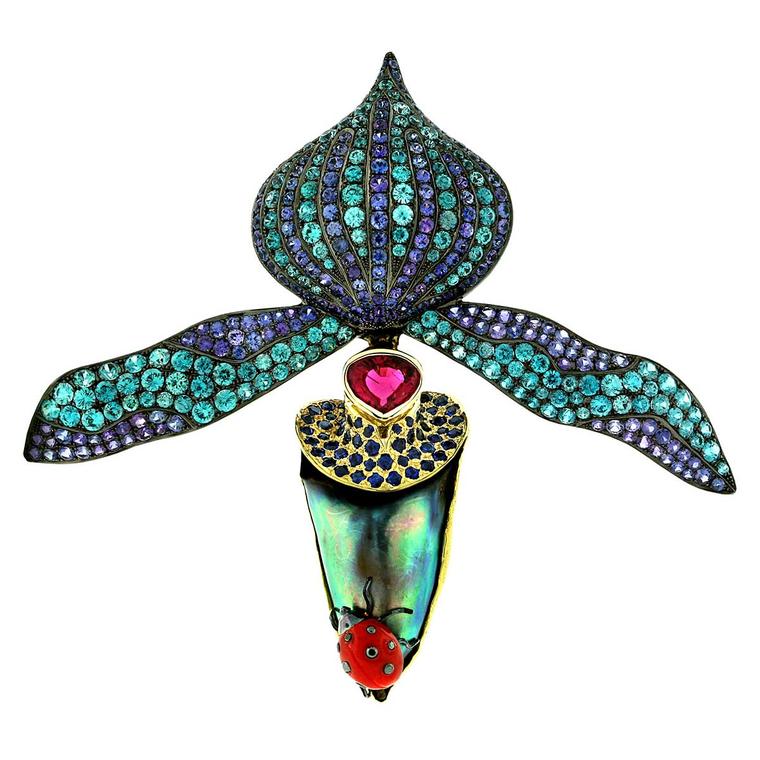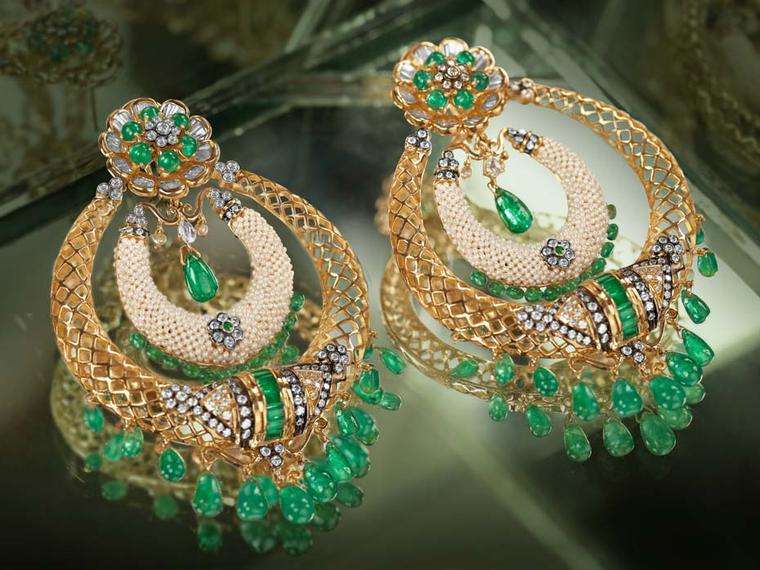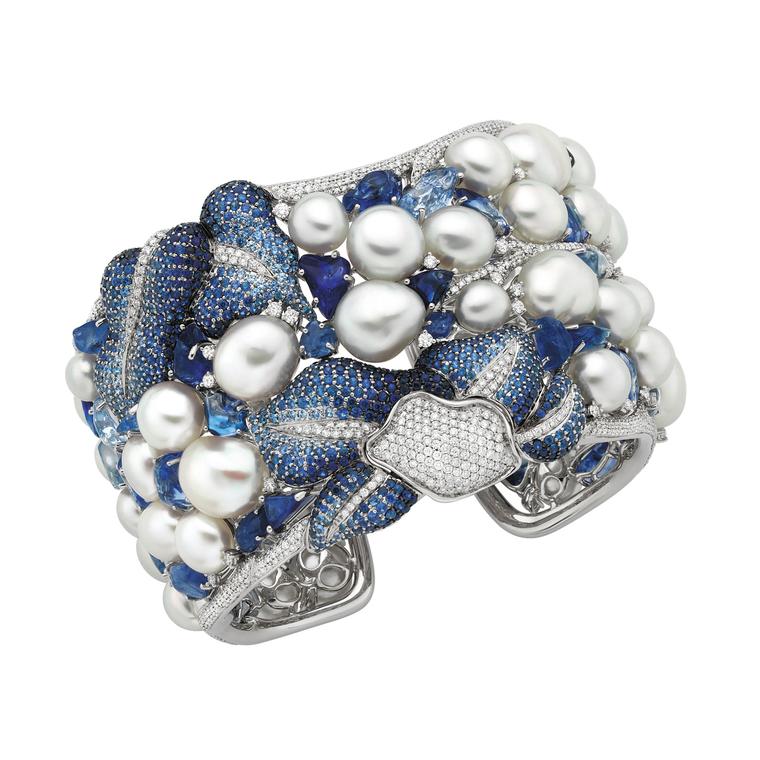
By Maria Doulton
Keshi, which means poppy seed in Japanese, is the name given to a small pearl consisting entirely of nacre, which has an irregular shape. Resembling a rice crispy - an analogy that may be more familiar to our Western readers - keshi pearls are becoming increasingly sought after as we favour soft organic shapes and unique forms over symmetrical perfection. Which is somewhat ironic, as only 20 years ago keshi pearls were tossed back into the sea, while today they can be as valuable as their perfectly spherical cousins.
Read more about the history of pearls here
Keshi pearls are by-products of pearl farming but unlike a cultured pearl, which has a seed or nucleus at its centre, the keshi is a fluke of nature. But first a little on cultured pearls. These are different from the very rare natural pearl because they are farmed using a process developed by Mr. Mikimoto of Japan in 1893. The cultivation process starts when a nucleus, which acts as an irritant, is planted inside a mollusc and then returned to the sea to grow. Over time, the mollusc attempts to roll the irritant out of its shell, so forming a pearl as the nucleus picks up nacre from the mother-of-pearl inside the shell.
While the cultured pearl is growing, the keshi is a little stowaway found nestling alongside the main cultured pearl. Keshi pearls are usually formed when the mollusc rejects the nucleus, but the pearl-forming process continues. As keshi pearls have no nucleus, they are entirely made up of nacre, which gives them their particularly attractive rainbow-like iridescence. But they are not considered natural pearls as they are an offshoot of the cultivation process.
Keshi pearls are not to be mistaken with the more voluminous baroque pearls, which do have a nucleus but, rather than develop in a uniform shape, have gone their own strange way to produce swirling, meringue-like shapes. Keshi pearls can come in a variety of colours as most pearl molluscs produce them, so you can find a range spanning from Tahitian to Akoya keshi pearls, and they can be formed in fresh or salt water but are rarely as large as South Sea pearls.
Read more about South Sea pearl jewellery here
One of the reasons that keshi pearls are increasing in value is because, in the interests of efficiency, more oysters are being x-rayed. When a nucleus-free oyster is found, they are re-nucleated before a keshi has time to form. So as beautiful as perfectly spherical pearls may be, today we are becoming more adventurous in our tastes and experimenting with the full spectrum of shapes. Here is my selection of some of the loveliest jewels that celebrate the strange beauty of the keshi pearl.
Autore jewellery of Australia is one of the biggest producers of South Sea pearls, and with a strong commitment to design, has long appreciated the beauty of the keshi pearl, which here it combines with the soft glow of rose-cut diamonds.
See more pearl jewellery by Autore here
Fellow Australian Margot McKinney uses Tahitian keshi pearls as petals, which have diamond dewdrops and stamens. The lavender spinel drops pick up the pink and mauve iridescence of the pearls.
Creating an informal look, Yvel jewellery strings large white keshi pearls on a long gold chain, alternating them with brushed gold beads in irregular keshi-like shapes.
Mexican-born Daniela Villegas has a thing about animal bones, and in her Frog Skeleton earrings four gleaming grey keshi pearls make the slightly macabre scene a thing of beauty. American jeweller Halleh, meanwhile, combines the pearl with nothing more than a slender gold band studded with sapphires for a simple yet elegant look.













